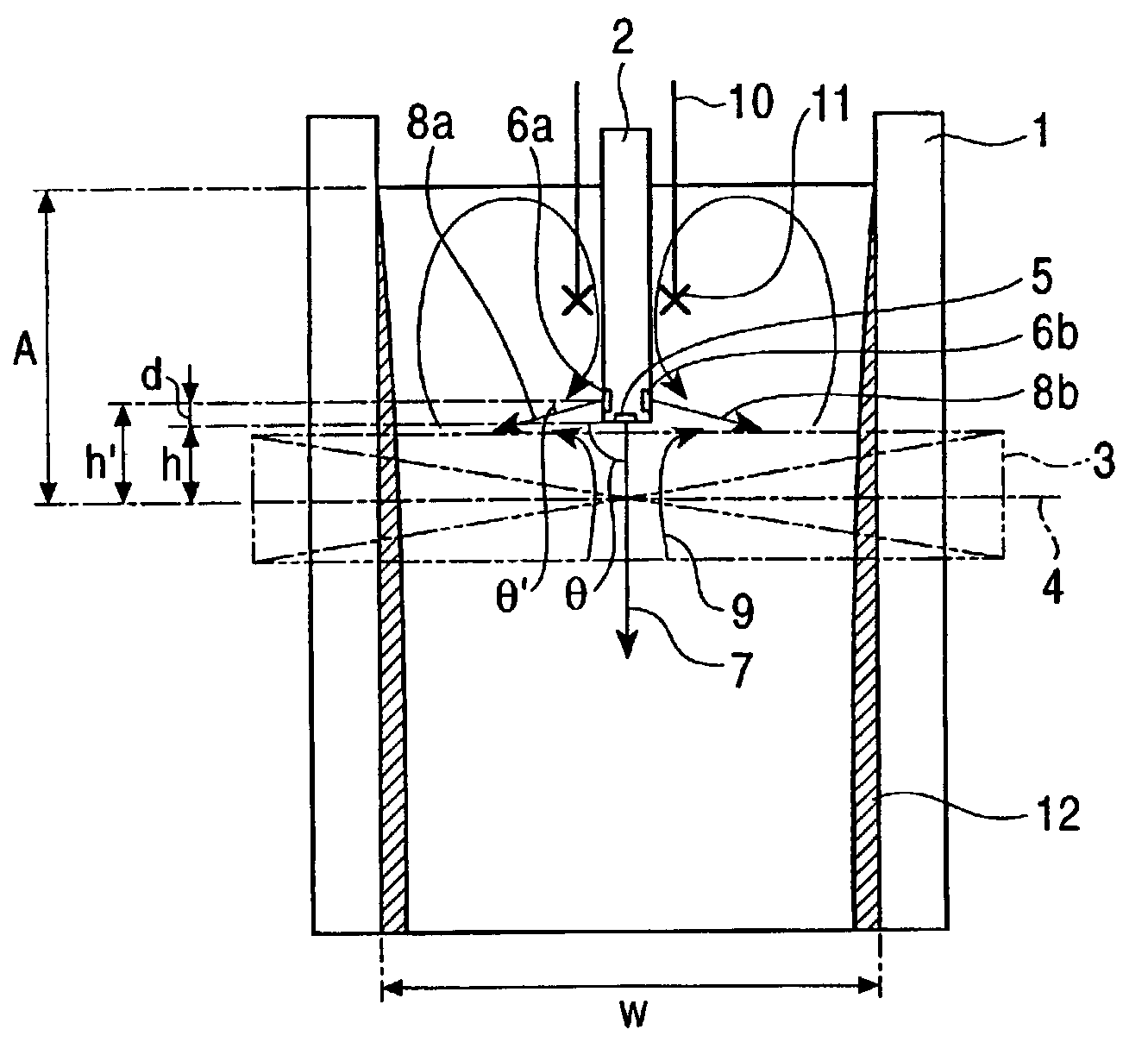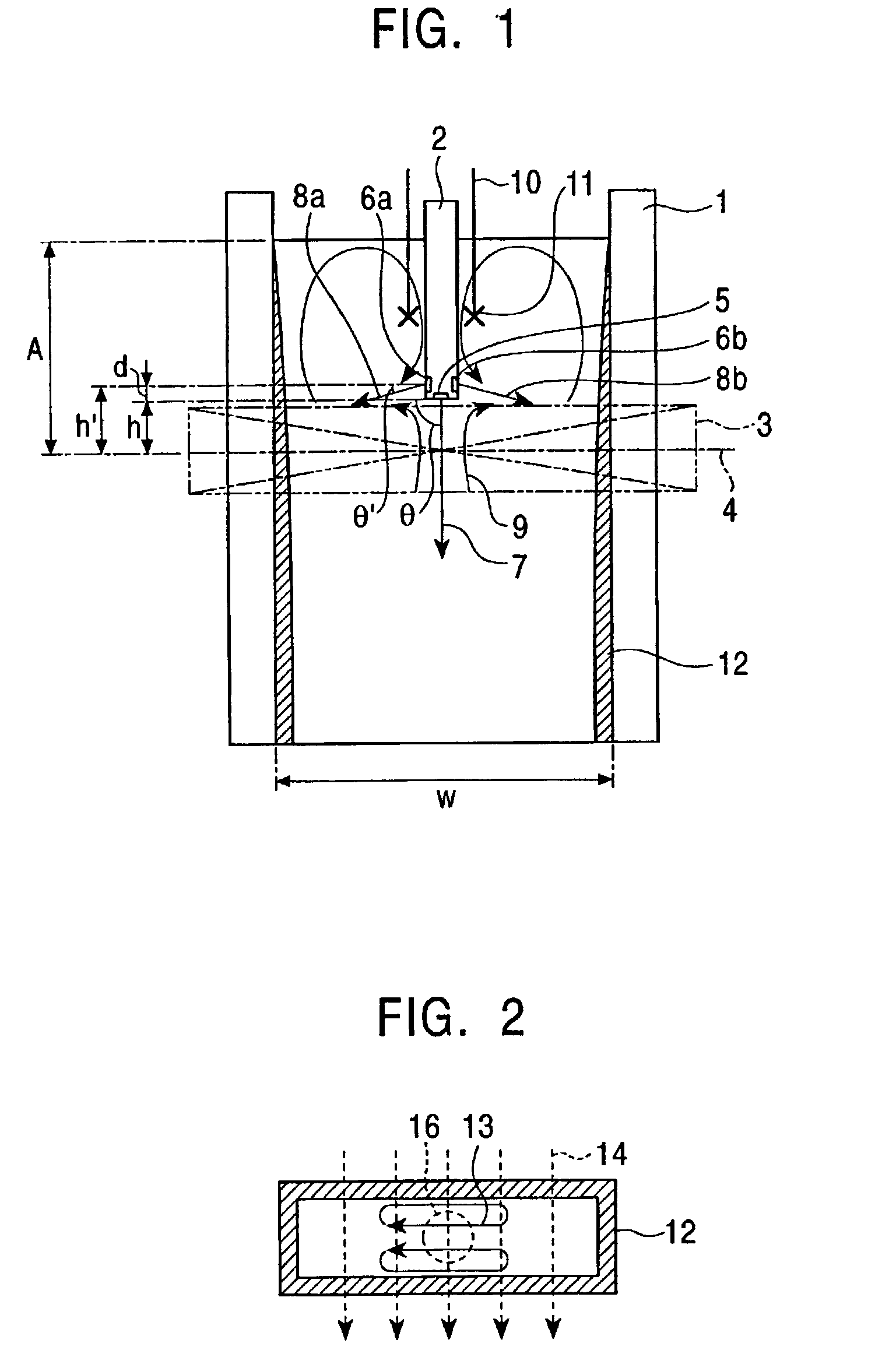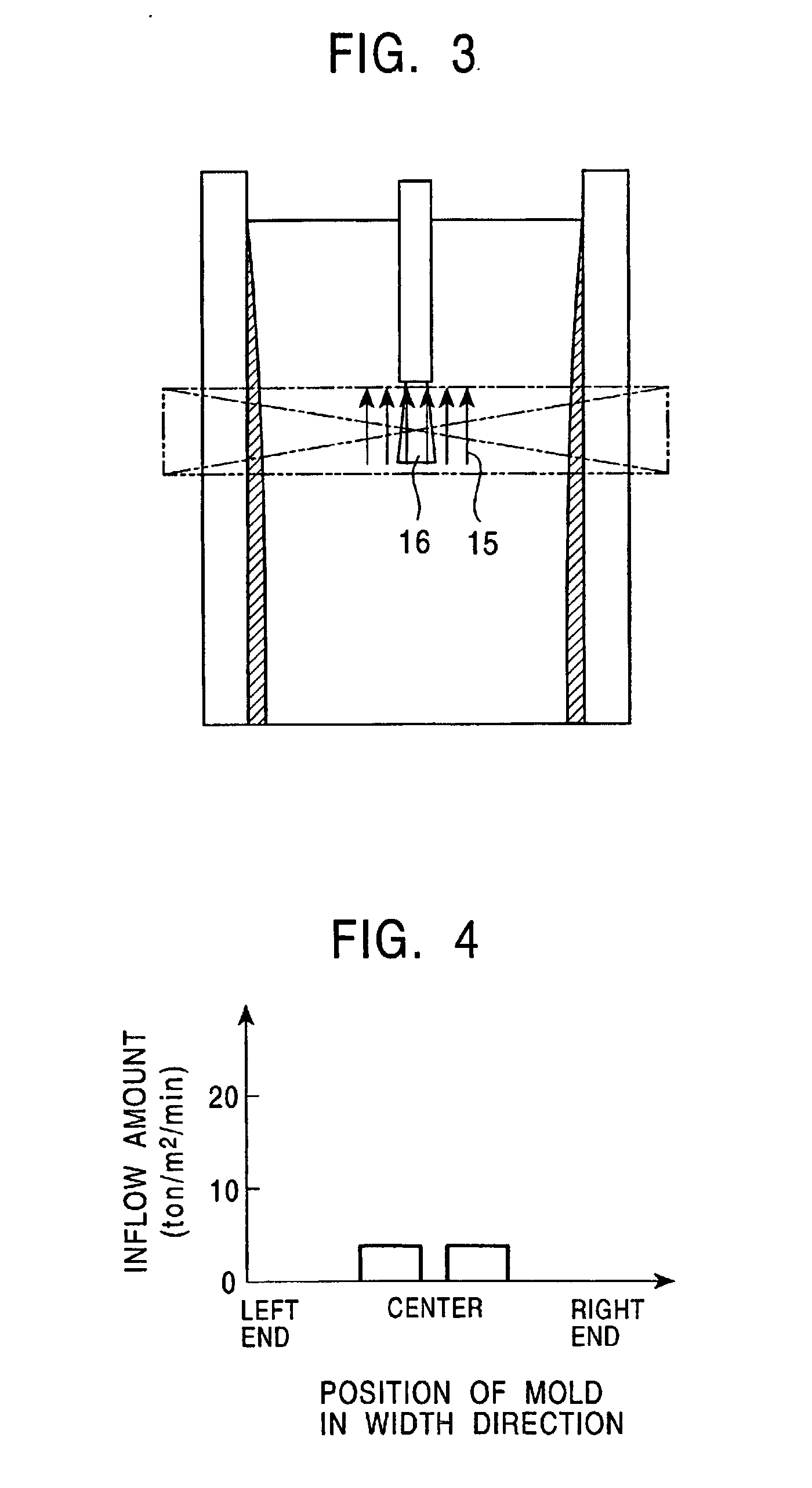Production method for continuous casting cast billet
a production method and technology of casting billet, applied in casting apparatus, manufacturing tools, melt holding vessels, etc., can solve the problems of reducing the yield of a product, difficult to stably manufacture the cast piece in the method, and malfunction in production, so as to increase the effect of forming the local flowing portion and the damping effect of the stream
- Summary
- Abstract
- Description
- Claims
- Application Information
AI Technical Summary
Benefits of technology
Problems solved by technology
Method used
Image
Examples
example 1
[0125] Direct current magnetic field application position (distance from molten metal level in mold to center of height of magnetic pole)
[0126] A: 0.347 m
[0127] Strength of applied magnetic field: 0.3 T
[0128] Height of magnetic field: 0.15 m
[0129] Immersion nozzle
[0130] Upper ejection hole: 2 holes, size of hole 10*10 mm
[0131] ejection angle .theta.=0.degree. (horizontal)
[0132] Lower ejection hole: single hole, size of hole 28 mm
[0133] dia (circle)
[0134] ejection angle .theta.=90.degree. (vertically downward)
[0135] Immersed depth of lower hole (from molten metal level in mold to lower end of lower ejection hole) 0.34 m
[0136] Immersed depth of upper holes (from molten metal level in mold to center of upper ejection hole) 0.177 m
[0137] Inner diameter of immersion nozzle 0.040 m
[0138] Distance from lower ejection hole to center of height of magnetic pole h: 0.007 m
[0139] Distance from upper ejection hole to center of height of magnetic pole h': 0.170 m
[0140] Casting speed: 1.6 m / min Th...
example 2
[0151] Direct current magnetic field application position (distance from molten metal level in mold to center of height of magnetic pole)
[0152] A: 0.347 m
[0153] Strength of applied magnetic field: 0.3 T
[0154] Immersion nozzle
[0155] Upper ejection hole: 2 holes, size of hole 10*10 mm
[0156] ejection angle .theta.=0.degree. (horizontal)
[0157] Lower ejection hole: single hole, size of hole 28 mm
[0158] dia (circle)
[0159] ejection angle .theta.=90.degree. (vertically downward)
[0160] Immersed depth of lower hole (from molten metal level in mold to lower end of lower ejection hole) 0.290 m
[0161] Immersed depth of upper hole (from molten metal level in mold to center of upper ejection hole) 0.127 m
[0162] Inner diameter of immersion nozzle 0.040 m (40 mm)
[0163] Distance from lower ejection hole to center of height of magnetic pole h: 0.057 m
[0164] Distance from upper ejection hole to center of height of magnetic pole h': 0.220 m
[0165] Casting speed: 1.2 m / min Throughput of cast: 0.37 t / min
[01...
example 3
[0193] Dimension of mold: long side 1.2 m, short side=0.26 m, height=0.9 m
[0194] Direct current magnetic field application position (distance from molten metal level in mold to center of height of magnetic pole) A: 0.60 m
[0195] Height of magnetic pole: 0.2 m
[0196] Strength of applied magnetic field: 0.3 T
[0197] Immersion nozzle
[0198] nozzle inside diameter: 90 mm
[0199] upper hole: 2 holes,
[0200] size of hole 21*30
[0201] lower hole: 2 holes, size of hole 49 mm dia (circle)
[0202] Distance from lower ejection hole to center of height of magnetic pole h: 0.10 m
[0203] Distance from upper ejection hole to center of height of magnetic pole h': 0.30 m (d=0.2 m)
[0204] Casting speed: 1.6 m / min
[0205] Throughput of cast: 3.5 t / min
[0206] Supply rate of molten steel from upper holes Q':
PUM
| Property | Measurement | Unit |
|---|---|---|
| Angle | aaaaa | aaaaa |
| Length | aaaaa | aaaaa |
| Distance | aaaaa | aaaaa |
Abstract
Description
Claims
Application Information
 Login to View More
Login to View More - R&D
- Intellectual Property
- Life Sciences
- Materials
- Tech Scout
- Unparalleled Data Quality
- Higher Quality Content
- 60% Fewer Hallucinations
Browse by: Latest US Patents, China's latest patents, Technical Efficacy Thesaurus, Application Domain, Technology Topic, Popular Technical Reports.
© 2025 PatSnap. All rights reserved.Legal|Privacy policy|Modern Slavery Act Transparency Statement|Sitemap|About US| Contact US: help@patsnap.com



